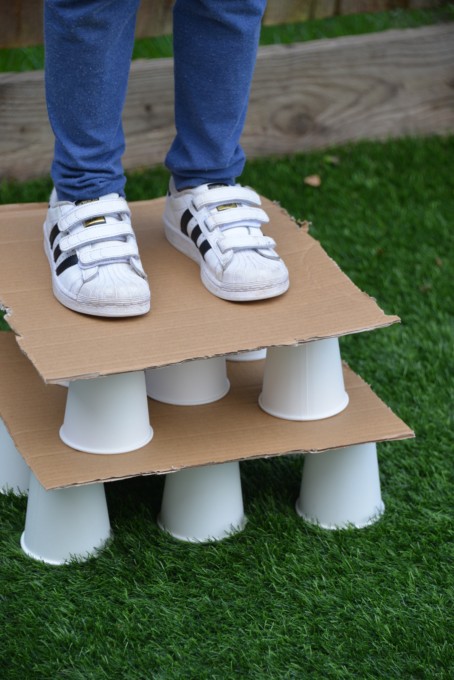Greek architecture is famous for its tall columns. Columns support a roof without the need for walls.
Greek buildings often used the post and lintel system of columns with a roof ( or architrave ) on the top. Another example of post-and-lintel construction is Stonehenge in the UK.

Column and Lintel Demonstration
This activity uses paper cups to act as columns to demonstrate how strong these types of structures were. Many Greek buildings still exist today despite being thousands of years old!

You’ll need
Paper Cups
Thick cardboard
Instructions
First, stand on one paper cup, it should crumple. This is because your weight pushes down on the cup and compresses it.
Try spacing several cups out evenly and then place a sheet of cardboard on the top. You should find the cups can now hold your weight.
Carefully try a second layer.
Ask a heavier person to try to stand on your cup tower, do the cups hold their weight too?

When the cups are arranged neatly spaced apart with a piece of cardboard over the top, the weight is spread out over all the cups rather than focussed on just one, which means the paper cup structure can hold more weight.
Greek Architecture Challenge
Build your own Greek temple using paper cups and cardboard.
This post is part of my Around the World in 50 Experiments series for Greece!

Last Updated on April 24, 2023 by Emma Vanstone

Leave a Reply